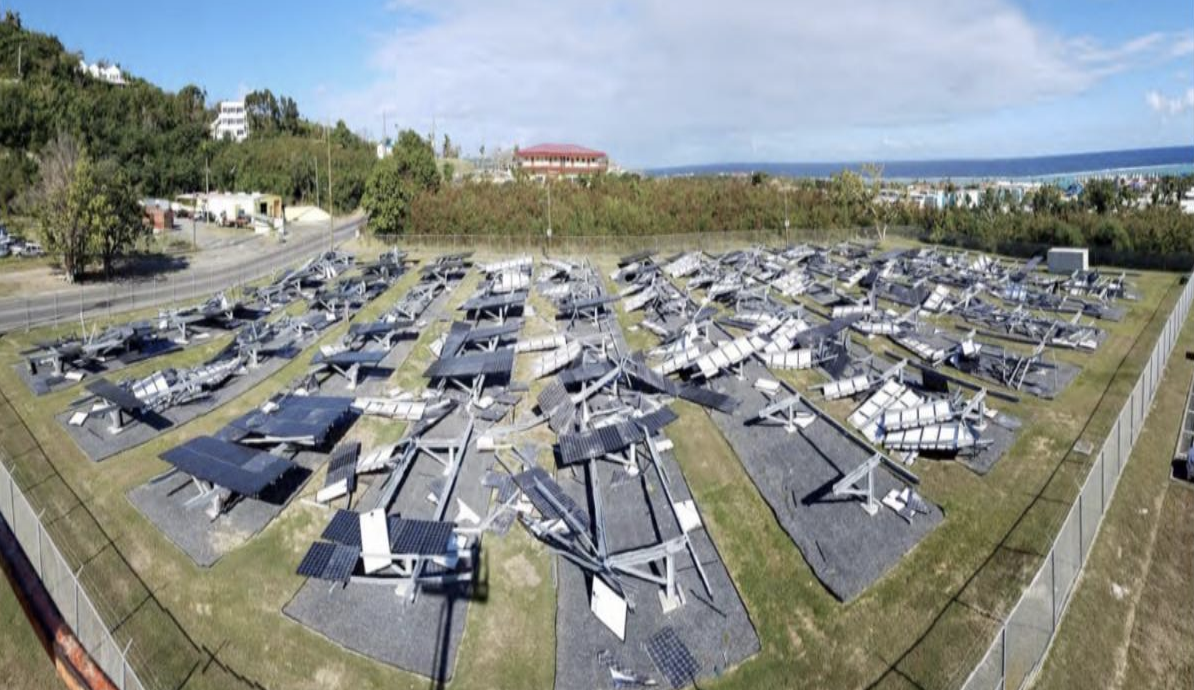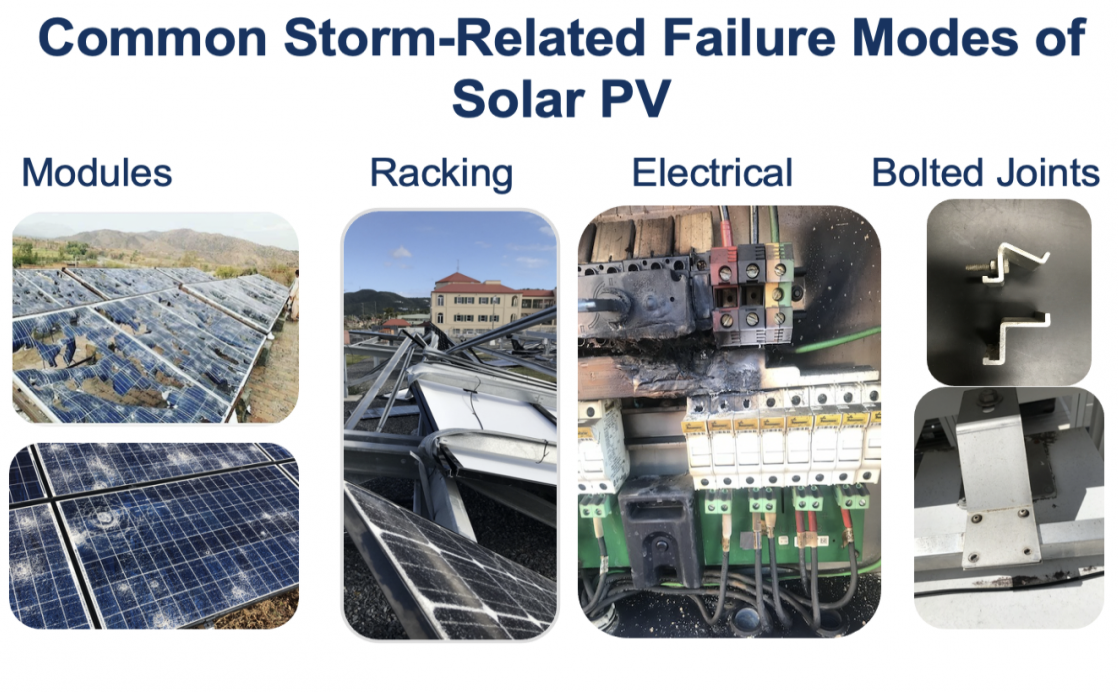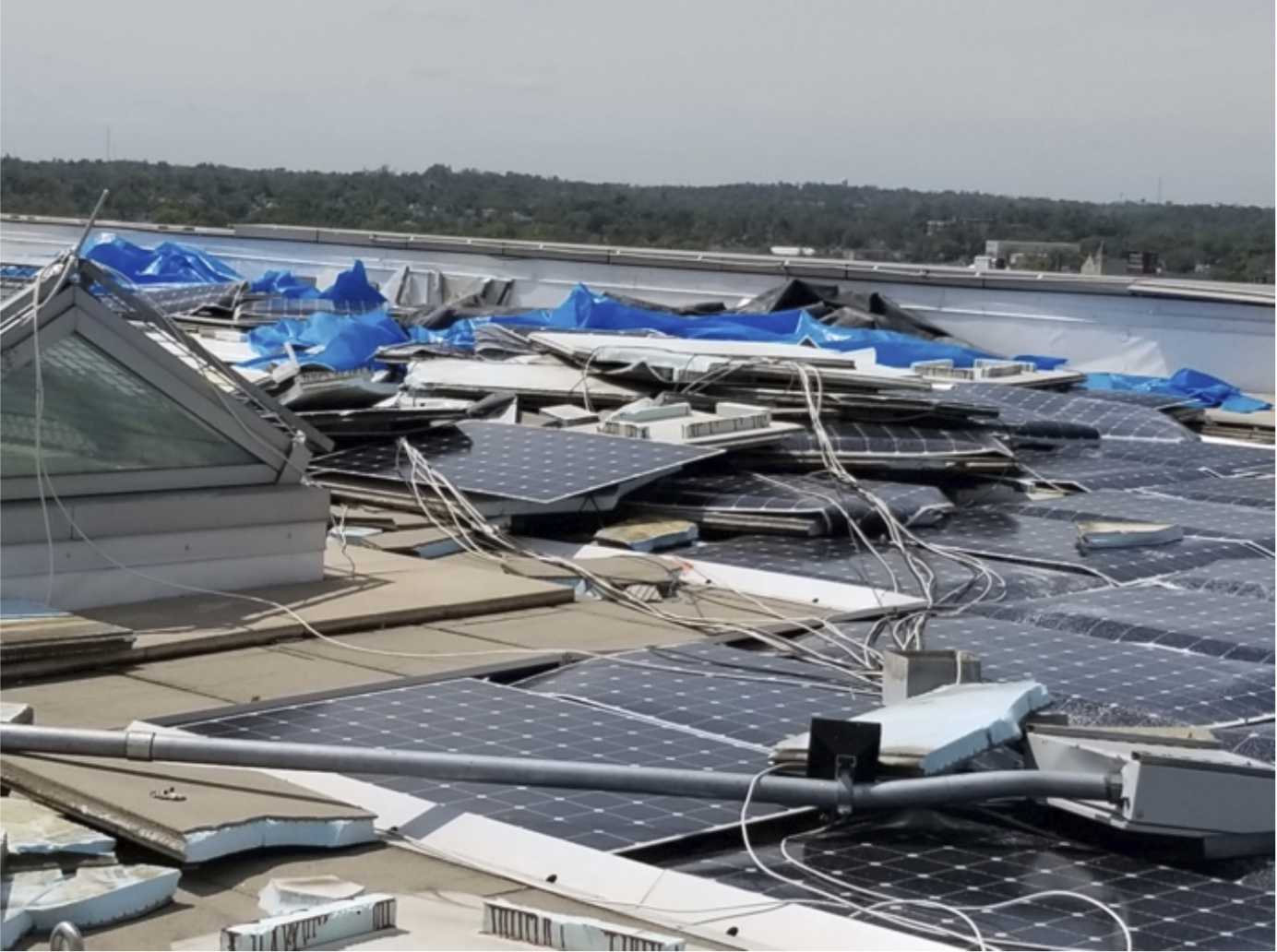Solar Photovoltaic Resilience
Ensuring the durability of solar hardware in severe weather is a vital yet underappreciated element of broader energy resilience. It requires an understanding of storm dynamics, engineering, risk assessment and fault analysis. We draw on lessons in PV resilience from across federal sites to improve the standard of practice in the broader solar community.
Solar Array Inspection, Failure Analysis, Specifications and Repair Scopes of Work Caribbean Field Inspection Report
 The 2017 hurricane season damaged solar arrays on many federal sites, throughout the Caribbean and Southeastern United States. The LBNL team collected lessons from site visits and industry experts to develop recovery and rebuild plans for agencies. The work revealed best practice resiliency specifications intended to be used with future PV installations.
The 2017 hurricane season damaged solar arrays on many federal sites, throughout the Caribbean and Southeastern United States. The LBNL team collected lessons from site visits and industry experts to develop recovery and rebuild plans for agencies. The work revealed best practice resiliency specifications intended to be used with future PV installations.
Most notably, the 2017 hurricane season revealed key systemic, industry-wide gaps with regard to PV storm durability. The solar PV industry is just now starting to address weather durability issues ranging from codes, standards, product designs, testing, installation practices and operations. This report provides useful technical guidance and recommendations.
For more information on best practices for PV procurement, visit the Renewables Procurement page.
 Solar Photovoltaic Systems in Hurricanes and Other Severe Weather Fact Sheet
Solar Photovoltaic Systems in Hurricanes and Other Severe Weather Fact Sheet
This DOE FEMP-sponsored fact sheet provides practical and useful information on important design, construction, and operational factors that can have a significant effect on the ability of a photovoltaic system to survive a severe weather event.
 Weather Impacts on Solar PV Operations Summary of the Current Body of Knowledge and Implications for Further Investigation
Weather Impacts on Solar PV Operations Summary of the Current Body of Knowledge and Implications for Further Investigation
Severe weather is affecting solar photovoltaic systems in ways that have not been anticipated and quantified by key industry stakeholders. This report looks at the operational and planning implications of both new, proposed and existing solar PV systems to be set in regions with severe weather events in an attempt to begin addressing data gaps in this area.
Existing PV Array Storm Vulnerabilities & Risks Sub-Frame Deflection, Fastener & Module Damage
This presentation discusses PV array storm vulnerabilities caused by sub-frame deflection as well as fastener and module damage. The goals are to highlight the potential need for retrofits and reinforcement of existing arrays as well as changes in codes and standards.
PV Hardware Vulnerabilities Revealed During Storm Stress
This presentation, delivered in partnership with National Renewable Energy Laboratory (NREL), discusses major failure modes in PV systems caused by storm damage and provides potential corrective actions with associated costs that can be used to mitigate damage.
Severe weather events can have a significant impact on the survivability of solar photovoltaic (PV) systems. The DOE's Federal Energy Management Program (FEMP) and the General Services Administration (GSA) developed a guide to help agencies identify and correct vulnerabilities of existing PV systems that can result in failures if left unaddressed.
This guide helps users understand the type and severity of severe weather that can occur at a given location, and provides pre- and post-storm operations and maintenance (O&M) measures that can reduce the potential for damage to a PV system during a severe weather event and help speed the recovery of a PV system damaged during a storm.
Green Proving Ground (GPG) Outbrief 24: PV Resiliency - Addressing Weather Vulnerabilities
After the 2017 hurricane season, GSA Green Proving Ground (GPG) hired LBNL and NREL to conduct post-storm field inspections in order to better understand why some PV systems failed, while other survived. Based on these field observations as well as others in the aftermath of hail storms, strong winds, and flooding, LBNL created guidance to help agency managers identify the most common PV vulnerabilities and the actions that can be taken to prepare for them. During this webinar, LBNL researchers review the guidance and answer questions from attendees.
